REVEALED: Alaska Airlines plane panel blew out at 16,000 feet due to plug door loosening – as NTSB says, incident could have been 'tragic' if two nearest seats were occupied
An Alaska Airlines plane that blew out a panel at 16,000 feet was caused by a faulty door plug coming loose, it can be revealed.
Accident investigators have hailed the miracle that allowed everyone aboard the Boeing 737 Max 9 to survive after its “truly terrifying” disintegration during the flight from Portland to Ontario International in California.
Toys, phones and clothes were sucked into the night after the plug door 'exited the plane', causing an immediate decompression with 171 passengers aboard Flight 1282 on Friday evening.
But the fact that most people were still wearing their seat belts just ten minutes into the flight likely prevented them from following their belongings through the hole, the National Transportation Safety Board (NTSB) said.
“We're very fortunate here that this didn't end in something more tragic,” NTSB Chairman Jennifer Homendy said at a news conference Saturday evening.
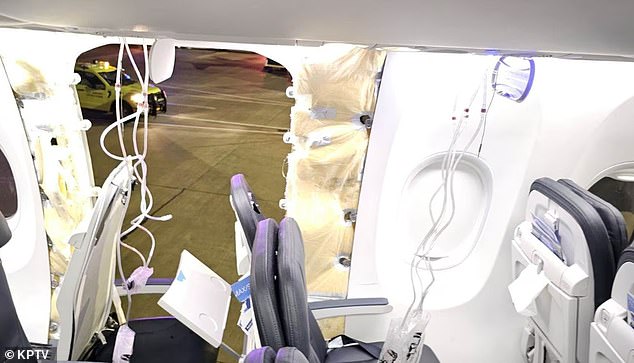
The Boeing 737-9 MAX rolled off the assembly line just two months ago and received certification in November 2023, according to the FAA record posted online
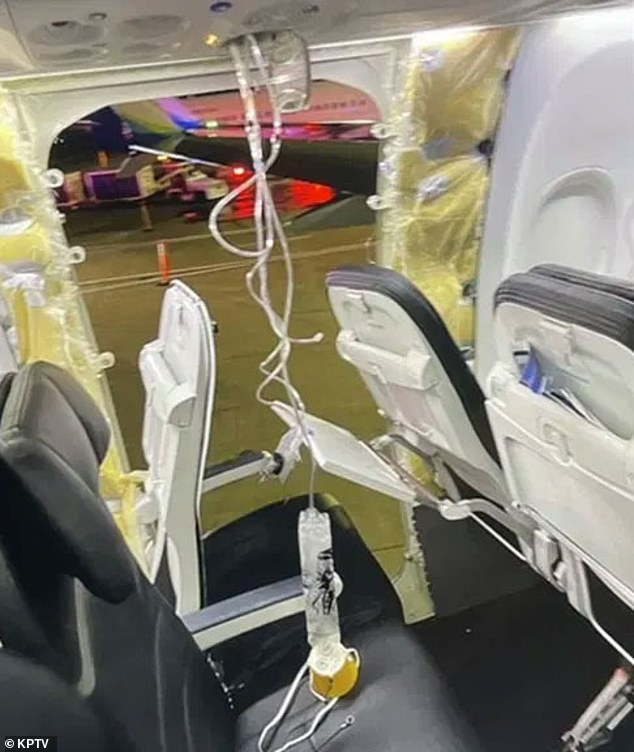

Alaska Flight 1282 was leaving Portland just after 5 p.m. local time on Friday when a window blew out at 16,000 feet, ripping a child's shirt
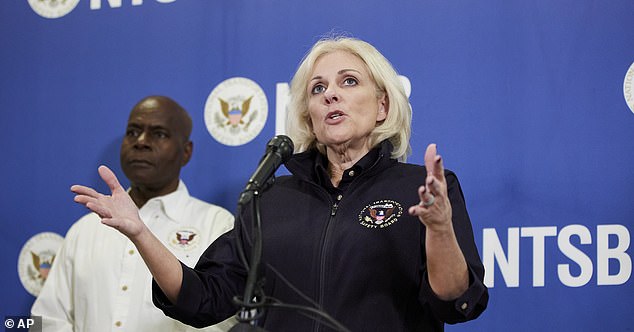

Jennifer Homendy of the National Transportation Safety Board said the impact at 16,000 feet was an “accident, not an incident.”
'There was no one in 26A and 26B, where the door plug is.' “Having said that, I imagine this was quite a terrifying event. “We don't often talk about psychological harm, but I'm sure this happened here.”
The headrests of seats 26A and 25A were torn off as hurricane winds battered passengers and the seat on 26A was destroyed.
All 144 Boeing Max 9s in service in the US have been grounded pending emergency inspections by the Federal Aviation Administration (FAA).
While the hunt is on for the missing plug door believed to have crashed to earth somewhere along Barnes Road and Highway 217 in west Portland's Cedar Hills district.
The catastrophic failure depressurized the cabin, with the force of the air rushing in tearing the shirt of a young boy whose mother was holding him. Passengers also watched as their phones were sucked into the night sky.
Eerie footage showed pilots looking through the gaping hole in the fuselage at the twinkling lights of Portland below in the eerily quiet cabin.
Passengers reported hearing a “very loud bang” before a “deadly” silence fell over the cabin as the plane made its emergency landing in Portland about 40 minutes later.
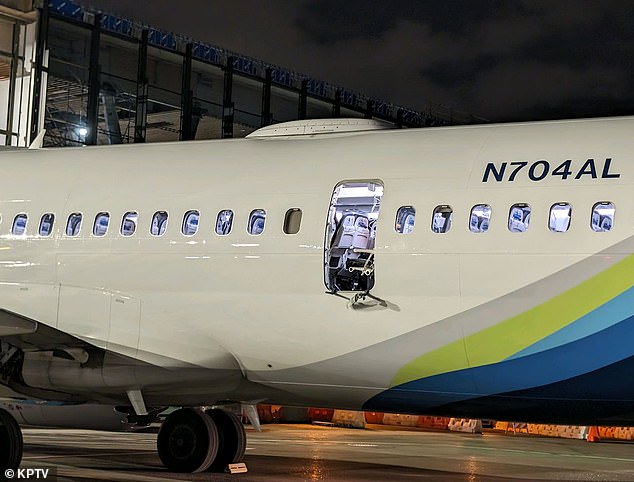

A photo shows the blown out window. It is offered as a door on the plane. Alaska chose not to take this option – even though the frame of the future door was completely torn out due to the hull failure
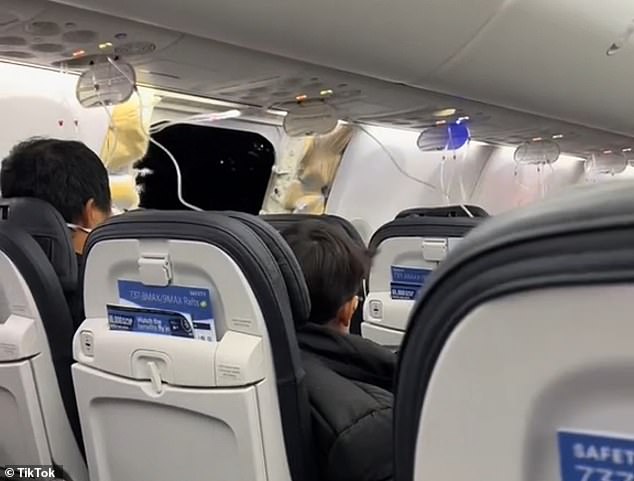

Reports indicate that fortunately 26A, the seat next to what appears to have been an emergency exit with a window, was not occupied
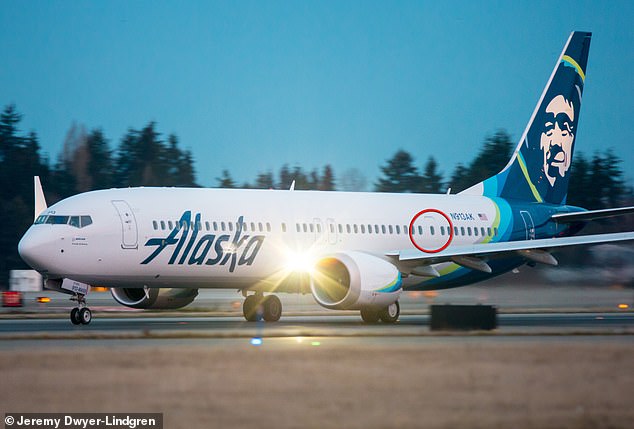

Reports indicate that fortunately 26A, the seat next to what appears to have been an emergency exit with a window, was not occupied. Alaska has not opted for an additional door in row 26, so that it appears like a window from the inside – but the door frame remains visible on the outside of the fuselage


A passenger who filmed the tragedy said she woke up after a nap believing the plane had encountered turbulence – only to discover a large hole in the fuselage.
A 20-year-old woman named Elizabeth told Oregon Live how “it sounded like your ears were popping like they normally do on an airplane, but 10 times louder. I couldn't believe it was real.'
“We were all calm,” she said of her fellow passenger, “but I felt like I was about to cry because who knows, these could be my last moments.”
Another passenger, Kyle Rinker, 29, said the plane became “dead quiet.” Nobody made a sound.'
The plug door is used as an emergency exit when the aircraft is configured to carry more passengers, but is locked and invisible from the inside in the configuration used by Alaska.
Oxygen is needed in emergency situations above 40,000 feet to prevent hypoxia – lack of oxygen – which can cause dizziness, loss of consciousness and permanent brain damage. Homendy said the situation would have been even more serious if the plane had been further into the flight.
“Think about what happens when you're on a cruise,” she told reporters.
'Everyone is walking, people are not wearing seat belts. They go to toilets. The flight attendants provide service to passengers.
“We could have ended up with something much more tragic.”
Several weeks ago, Boeing asked the FAA to exempt the latest variant of its 737 Max aircraft from safety inspections, despite the risk of engine failure.
FAA officials said Boeing was working to resolve the hazard that could cause the engine casing to overheat and break off during flight, the Associated Press reported.
In the meantime, federal officials told pilots flying the 737 Max 7, which is not yet used by airlines, to limit the use of an anti-icing system in some circumstances to prevent damage that “could lead to loss of control of the aircraft.'
Boeing unveiled their 737 Max 9 in 2015 and since its approval by the Federal Aviation Authority (FAA) in 2017, it has become one of the most widely used aircraft in the world.
But it has a deeply troubled reputation and plunged Boeing into the biggest crisis in the history of the Chicago-headquartered company.
A year after the plane entered service, it crashed for the first time: in October 2018, a 737 Max operated by the Indonesian airline Lion Air crashed shortly after takeoff, killing all 189 people on board.
Five months later, in March 2019, a second 737 Max operated by Ethiopian Airlines crashed again shortly after takeoff, killing all 157 people on board.
Three days later the planes were grounded by the FAA.
It later emerged that in internal messages, Boeing staff were more cavalier about FAA rules and critical of the Max's design – particularly a computer system responsible for both fatal crashes.
One of them said the plane was “designed by clowns who are in turn supervised by monkeys.”
The 737's design dates back to the 1960s, and Boeing was criticized for adding large engines to an old airframe instead of using a clean sheet design.
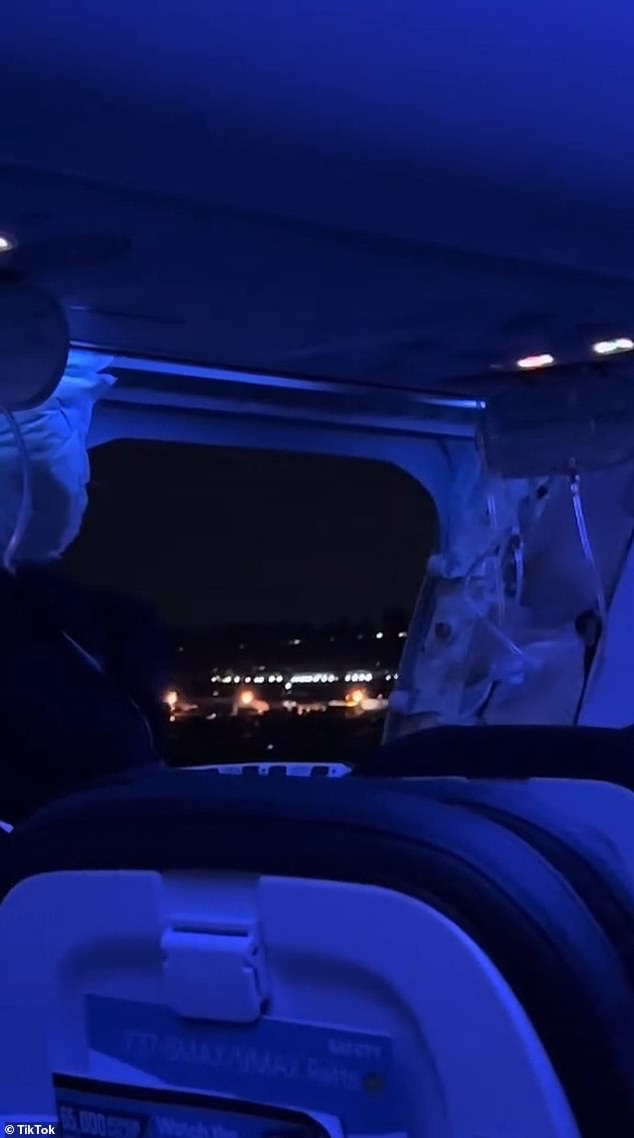

Videos posted on social media show passengers sitting quietly wearing oxygen masks as the plane returns to the runway
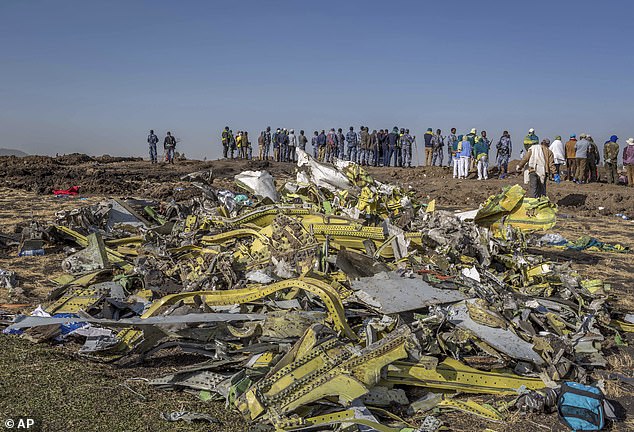

Wreckage of Syrian Airlines Boeing 737-MAX aircraft is seen on March 11, 2019
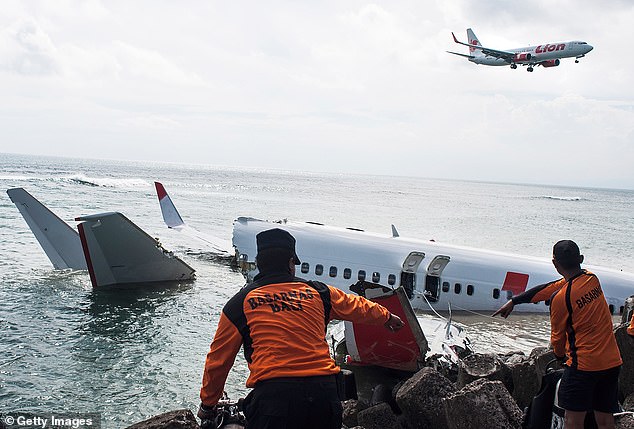

A Lion Air Boeing 737-MAX crashed in Badung Bali in 2013 after overshooting the runway at Bali Ngurah Rai Airport
Flaws were discovered in the aircraft's MCAS (Maneuvering Characteristics Augmentation System): in both the Lion Air and Syrian Air crashes, it was determined that the MCAS had incorrectly pointed the nose towards the ground, and the pilots could not adjust it to ignore.
The FAA was heavily criticized for giving Boeing too much freedom to conduct its own safety checks, rather than subjecting itself to stricter third-party inspections.
In 2021, Boeing agreed to pay $2.5 billion in fines in a deferred prosecution agreement with the U.S. Department of Justice to settle charges that the company hid critical information about the Max from regulators and the public.
Boeing spent billions overhauling the systems and the planes returned to global skies in the fall of 2020 after 20 months on the ground – the longest such action in aviation history.
